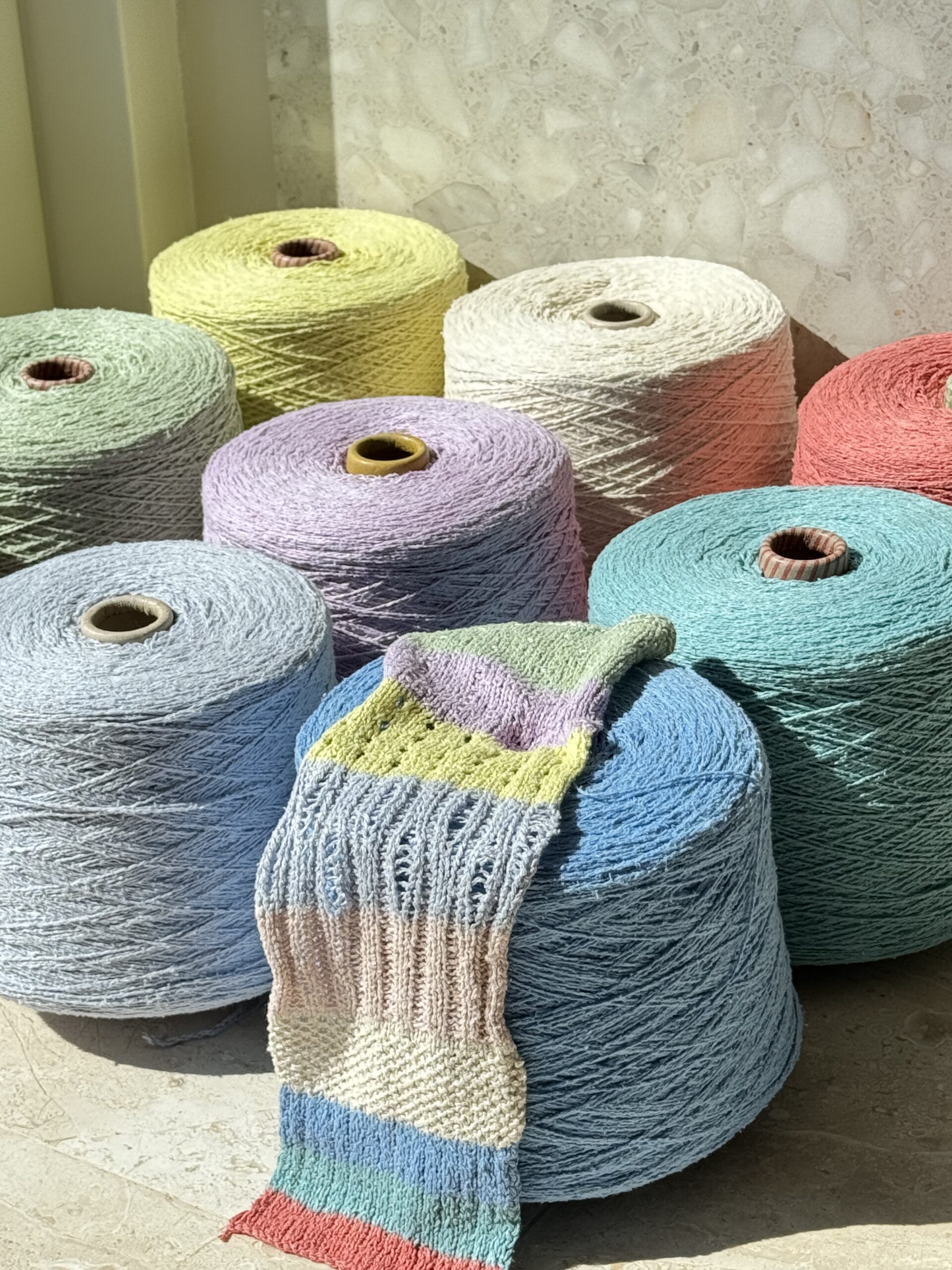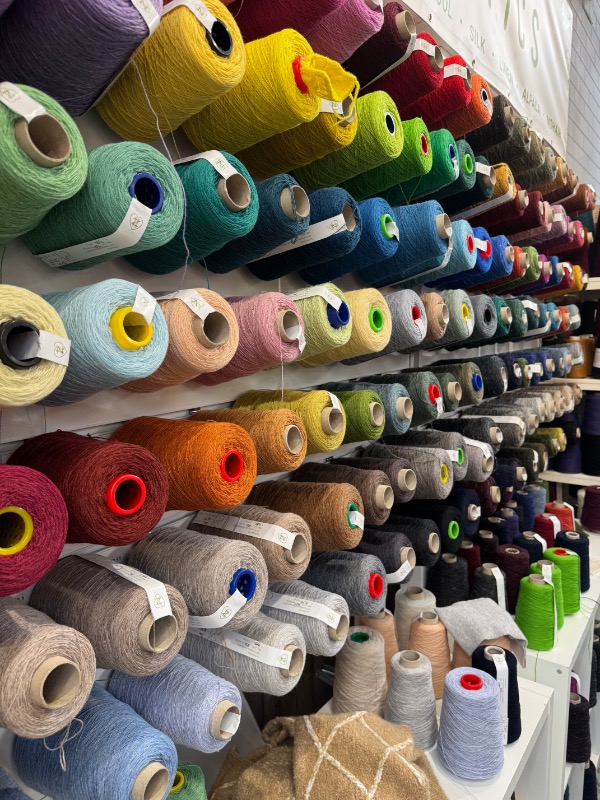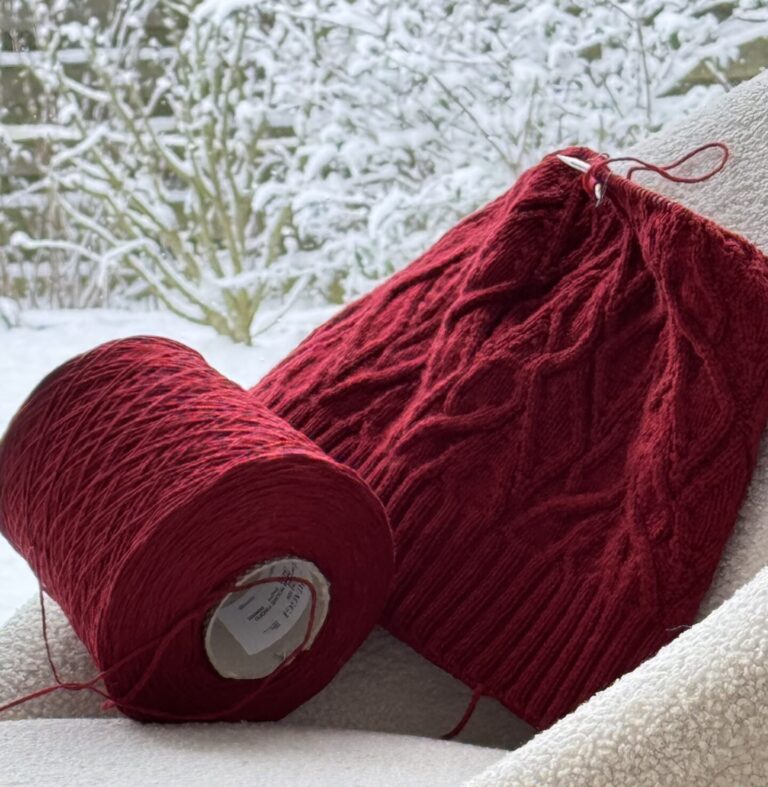The Silken World of Yarn: A Guide to Nature’s Most Alluring Fiber

✨ The Silken World of Yarn: Nature’s Softest Secret ✨
Silk. Just the word whispers luxury, doesn’t it? But did you know not all silk is created equal? In fact, there’s a whole world of silk yarns out there — each with its own personality, texture, sheen, and story. Let’s take a little trip into the cocoon and unravel the most common (and a few lesser-known) types of silk used in knitting yarns. You’ll be surprised how different they can be — and how exciting that is for your next project.
1. Mulberry Silk – The Queen of Silk
Let’s start with the diva of the bunch: Mulberry silk. This is the smoothest, whitest, and shiniest silk, made from silkworms fed exclusively on mulberry leaves.
Properties:
Welcome to The Silken World of Yarn, where each thread tells a story of elegance and craftsmanship.
- Ultra soft with a glossy, almost pearlescent sheen
- Strong and durable
- Takes dye like a dream, resulting in intense, luminous colors
In Knitting: Mulberry silk drapes like a couture gown. Use it for shawls, lightweight tops, or anything that benefits from a flowing, elegant silhouette. It’s slippery, so it’s best paired with a bit of grip (like a wool blend) for better stitch definition.
2. Tussah Silk – The Wild Spirit
Unlike the pampered worms of Mulberry silk, Tussah silk comes from wild silkworms who munch on oak and other forest leaves. It’s less processed, and that shows — in the best way.
Properties:
- Slightly rougher texture
- Natural golden-beige color
- More matte, but still with a gentle sheen
In Knitting: Tussah gives a subtle, earthy elegance. It’s more rustic and has more grip, which makes it easier to knit with than mulberry. Perfect for lightweight sweaters or warm-weather accessories with a natural vibe.
3. Bourette Silk – The Earthy Rebel
Bourette silk is made from the shorter fibers and remnants of the silk cocoon left after the long, smooth filaments have been reeled off for things like Mulberry silk. What’s left are the “scrappy” bits — and instead of discarding them, they’re spun into a completely different kind of silk yarn.
And let me tell you: this underdog has major style.
Properties:
- Nubby, slubby texture — lots of visual and tactile interest
- Matte, almost cottony appearance
- Often speckled or flecked, naturally or from blending
- Breathable, lightweight, and very wearable
In Knitting: Bourette silk gives you that perfectly imperfect, organic luxury feel. Think rustic French countryside meets Japanese wabi-sabi aesthetics. It has grip (great for cables or lace that needs to hold shape), and its slubbiness gives basic stitches visual dimension. Perfect for summer tees, drapey cardigans, and modern minimalist pieces where texture does the talking.
Bourette is also an amazing eco-choice: it makes use of what would otherwise be waste. So it’s not just beautiful — it’s conscious.
💡 Pro Tip from the Yarn Basket:
Bourette silk shines (ironically, without shine) when paired with minimalist silhouettes and neutral palettes — think ecru, clay, olive, or misty grey. It also plays beautifully with plant-dyed yarns and linen blends, giving you that slow fashion, handmade look that’s totally on trend for the coming seasons.
If you’re curating a silk-themed collection for your shop, Bourette is your secret weapon — it surprises people. They expect silk to be smooth and shiny, and Bourette flips that idea on its head in the best way.
4. Schappe Silk – The Hidden Gem
Schappe silk is made from the shorter fibers left over after reeling and combing — think of it as silk’s version of carded wool.
Properties:
- Less shiny, more velvety
- Soft and lofty texture
- Still strong but more pliable
In Knitting: Schappe silk behaves more like wool — you’ll love it if you want the softness of silk without the intense sheen. It creates beautifully soft fabric, perfect for everyday luxury sweaters or elegant layering pieces.
5. Demi-Schappe – The Balanced Beauty
A hybrid between raw and processed silk, Demi-Schappe retains some of silk’s natural texture while being a bit more refined than full Schappe.
Properties:
- Balanced between sheen and matte
- Light, breathable, and strong
- A touch of rustic charm with a smoother handle
In Knitting: Great for transitional garments — spring cardigans, fall shawls, and anything you want to feel “just right.” A beautiful compromise between rustic and refined.
6. Shantung Silk – The Textured Treasure
Made from irregular, slightly knobby silk fibers, Shantung silk has character in spades. It’s often used in fabrics with a “slubbed” texture — and yes, that texture shows up in yarn too!
Properties:
- Slubby, with occasional thick-thin variations
- Dry, crispy handfeel
- Matte with a hint of luster
In Knitting: Shantung silk adds texture without effort. You don’t need complicated stitchwork — the yarn does the talking. Ideal for modern, fashion-forward pieces with raw edges and
🧵Silk Yarn Personality Chart
| Silk Type | Texture | Sheen | Vibe | Best Use |
|---|---|---|---|---|
| Mulberry | Silky smooth | High gloss | Glamorous | Shawls, luxury garments |
| Tussah | Crisp, wild, tweedy | Soft sheen | Natural, raw | Accessories, summer tops |
| Schappe | Lofty, woolly | Matte | Cozy refinement | Sweaters, softwear |
| Demi-Schappe | Balanced | Semi-matte | Casual luxe | Year-round knits |
| Shantung | Slubby | Dry matte | Textural modern | Minimalist garments |
| Bourette | Nubby, rustic | Matte | Earthy, artisanal | Summerwear, textures |

The Great Cone Migration — Help Us Lighten the Load!



Loyalty program

Yarn Chart


